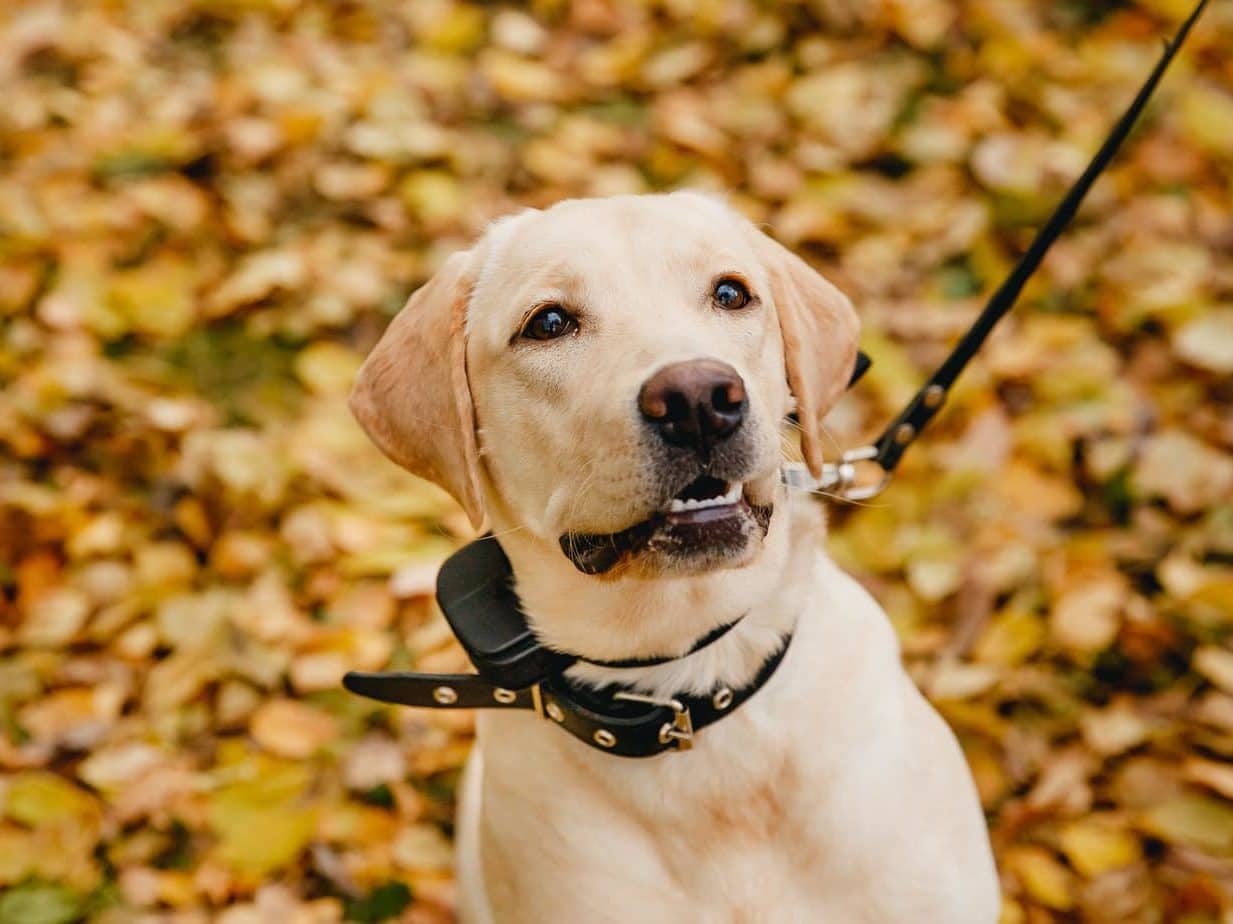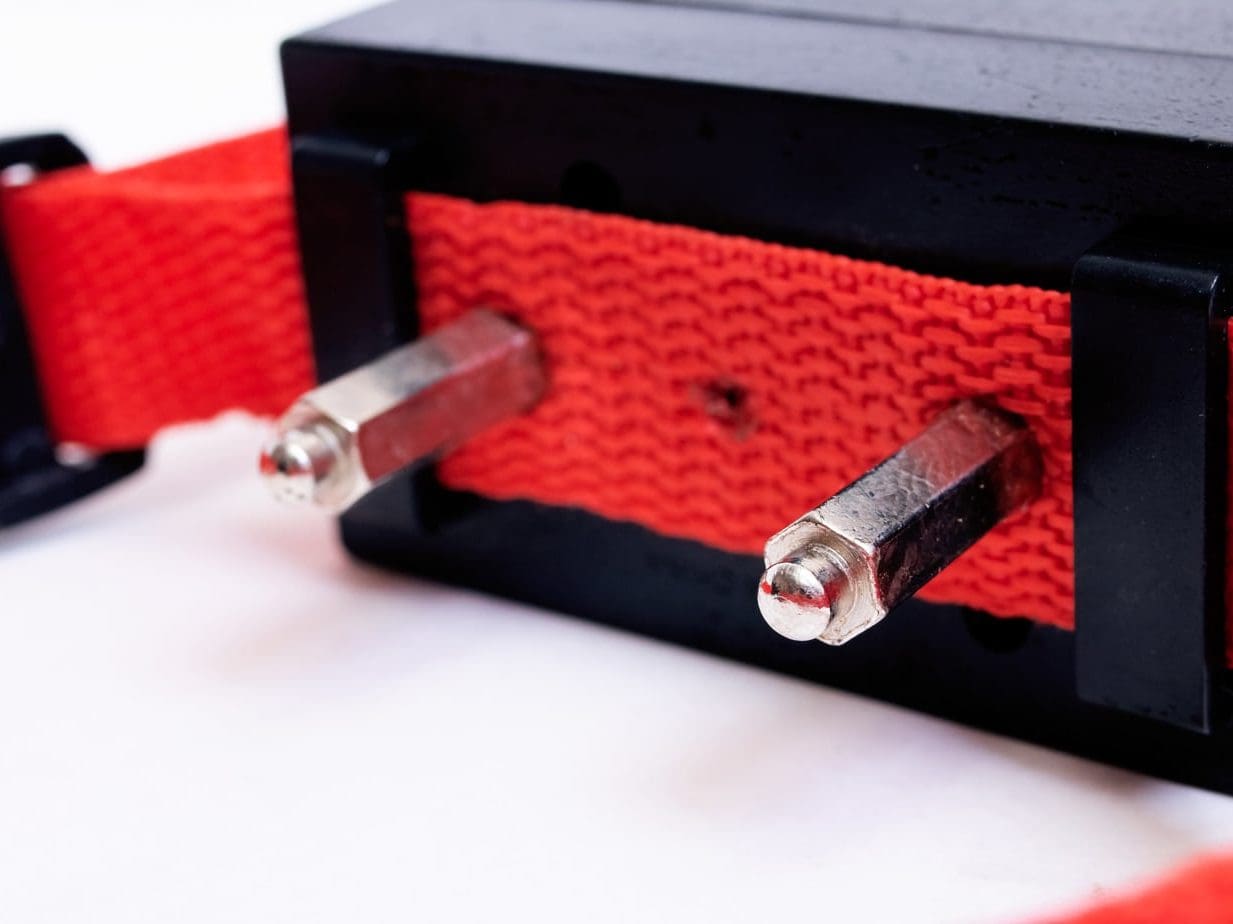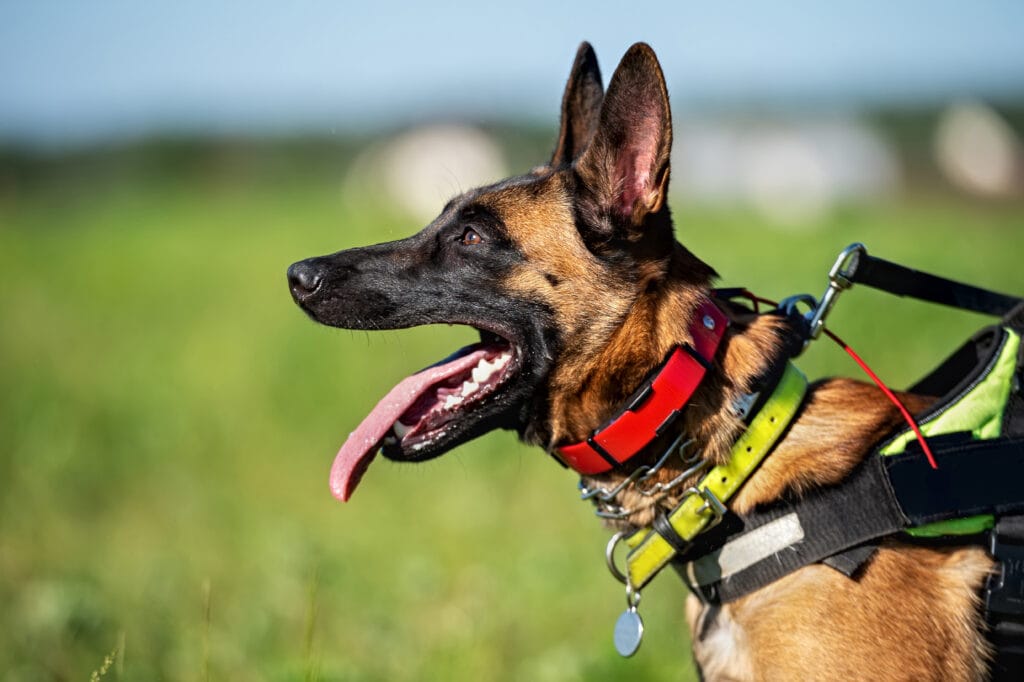E-Collars – Everything You Need To Know Before You Buy One
By admin / June 13, 2022 / No Comments / Pet Dogs
E-collars are a tool with which people can elect to train their dogs.
When the parents of a large dog (particularly, though small breeds are not exempt) raise the question of training their big dog, particularly for things like recall, it’s often a very quick suggestion that someone invest in an ecollar.
And then comes the debate of aversive vs positive. Inevitably inaccuracies get thrown around and overall? There’s a lot of myths and a lack of information because it all comes from a passionate place.
I mean, afterall, if you’ve been using a tool for 30 years with your dogs (or even 3 months) you don’t want to find out that you’ve been doing a bad thing, or that if you’ve been sucking it up and persisting with treat training, you don’t want to find there’s potentially an easier option.
So, I want to discuss one of those options for you now, so that you understand what you’re looking at when assessing these options for you and your dog. Because you deserve information that is clear, truthful and backed by fact.
Finding the best method for both you and your dog is really important, so I must discuss it.
I’m going to discuss what they are, how they work, why they work. Discuss with you when they should be used and when they shouldn’t. What they’re made to do, and what they’re not made to do.
Ali’s Ethics Statement
I’m stating it like this so it’s super obvious for any trainer or other professional coming into this piece to know my stance – know that this caveat is not necessarily for you, my wonderful dog parent, but I have a commitment to my training methodology and need to openly state this.
For reasons explained below, I am not a fan of e-collars and do not use them in my training, however, in order to give a view into why, this piece is needed. I promise I will write as unbiasedly as I can, and be informative and factual, allowing you to make your own decisions. I’ll try to be as unbiased as possible.
What Is An E-Collar?
Whilst it can be veterinary short hand for an Elizabethan collar (aka the cone of shame), it’s more commonly used in a dog training context and refers to an “Electronic Collar”.
E-collars, or electronic collars, are a type of training collar that gives a mild electric shock to the dog when they misbehave. They are also sometimes called “shock collars.” This collar is usually controlled by a remote, and the owner can determine how much electricity to give the dog based on their size and weight.
E-collars have been a pretty controversial topic since their introduction to dog training in the 1960’s. Some argue that they are inhumane and cruel, while others believe that they are an effective way to train a dog.
There is some scientific evidence (such as the DEFRA Study from 2010) that it does increase the stress levels your dog is subjected to, and it is good to note that the AVSAB say things like:
“Punishment based training methods may be advocated by those without an appreciation of the current status of science in dog training.”
However, it is ultimately your choice.
This collar has a sizeable device on a plastic collar that has two electrodes that penetrate the fur and sit against the skin of your dogs neck. This delivers a ‘shock’ (often referred to as a stimulus or static pulse) of electricity that acts to deter your dog from continuing with their current course of action.
How Does An E-Collar Work?
It comes with a remote, and when activated, it delivers a pulse of electricity (usually low voltages, and encouraged to be used at the lowest possible settings) to reprimand your dog or create an association between the activity that your dog is doing and the aversive stimulus applied by the ecollar.
It’s good to note that most of these devices, and certainly the ones that are preferable, are devices that offer a tone or beep (used as a warning), or a vibrate (as a secondary warning) before you need to escalate to a multi-levelled shock function. The idea is that this is a graduated experience and you should always use the minimum force required to stop the behaviour.

Why Does An E-Collar Work?
Before I go into the why it works for learning, it’s really important to understand the philosophy behind the training.
The image above is described as the Quadrants of Operant Conditioning (originating with B. F. Skinner in the 1920’s – a hundred years ago), which consists of four areas.
A note about the quotes in this piece
All of these quotes come from notable manufacturers of e-collars, including Garmin, SportDOG, and Mini Educator.
Positive Reinforcement – where a positive experience (usually a treat, toy, praise or affection but can also be lifestyle rewards such as sniffing) is given as a reward for doing something correctly. e.g. your dog sits, you say good and give a treat.
Negative Punishment – the withdrawal of a positive experience (Treat, toy, etc) for not getting something correct. e.g. removing a toy that your dog was destroying.
Positive Punishment – applying an unpleasant experience to create a bad association with the action your dog has done. e.g. your dog overplays with another dog and gets bitten.
Negative Reinforcement – a rush of relief that they didn’t get reprimanded and that they didn’t get things wrong. e.g. cat ran away and didn’t swipe them, encouraging the dog to chase the cat again.
An e-collar works on Positive punishment and negative reinforcement – and in an ideal world more negative reinforcement than positive punishment.
The ‘correction’ must happen within 2 seconds of the ‘problem’ behaviour for your dog to consistently understand that this was the reason they have been corrected.
Seek an evaluation by professional trainer before use on aggressive dogs.
e-collar Technologies, Inc. (producer of the Mini Educator)

Is There A Difference Between An E-collar And A Shock Collar?
There isn’t one. They are the same, just a case of branding. Some claim that the term “shock collar” is used emotively, but the truth is that a shock is a stimulus, is a pulse, is an experience that is aversive in nature – otherwise it wouldn’t “work”. The terminology, to me, is the minor factor in this. It’s more about understanding the device and when and why and how to use it.
Can An E-Collar Cause A Dog To “Shut Down”?
The thing about e-collars is that it’s asking your dog to listen to you, and if they don’t they will experience something undesirable or uncomfortable.
The way I describe it as the “Don’t Cry” way of teaching. The emotion is left undealt with in order to stop the outward display of emotion.
As opposed to dealing with the problem and changing a dogs emotional response an ecollar can quashing the response and disallow the response. This can be described as shutting down.
That ‘shut down’ state can appear like acquiesence. But it’s not the same. Often you will see subtle signs of stress, or pure 110% focus on their handler/owner.

But I Tried Positive Reinforcement & It Didn’t Work For My Dog, Should I Use An E-Collar?
I hear this a lot “treats doesn’t work for my dog” or “We tried that and it didn’t work” or the “I’m a trainer who uses e-collars and I’ve saved dogs who positive reinforcement failed” Now… I hear you and I don’t doubt you found that this worked.
However.
Positive reinforcement works with every dog – if it isn’t working for you then it’s a case that you are misunderstanding a thing, you’re increasing the expectations too quickly or you’ve misinterpreted the problem, or something. It’s not a case that your dog needs punishment to learn.
Positive Reinforcement relies on learning your dog, where as negative reinforcement and positive punishment work on making your dog understand you. Thus, if positive reinforcement isn’t working? Then it’s a you problem. Sorry! I say it with love, I promise.
How Do You Fit An E-collar correctly?
Never connect a lead/leash to the electronic collar;
Sportdog operating guide
It’s then a balancing act to ensure that the electrodes are against the skin but not penetrating the skin. Check the area where your dog’s e-collar attaches after each use.
Some e-collars encourage you to place the electrodes either side of the trachea for “Maximum effect”. I would recommend against this a lot because your dog’s trachea is quite delicate.
How Do I Introduce My Dog To An E-Collar
This is done assuming your dog is comfortable wearing a collar.
- Start by introducing the stimulus at the lowest level
- Try a time that your dog is exhibiting an undesirable behaviour.
- Observe your dog to see their reaction. This may be as mild as a change of expression, or a shake out, or it may be a visible reaction. That reaction is the reaction that you’re looking for – there should be no vocalisation such as yelping. You will have to increase beyond the mild discomfort shown by tightening lips or shake outs, but decrease it below yelping.
This should be adjusted down over time and should actually be decreased down stages to vibrate only or tone only. I would also recommend using a gentle toned verbal marker like “Nope” to even pre-cede or replace the tone only part. This what you can phase out the collar in the future.

What Are Vibrate Only Collars?
Some e-collars remove the “shock” stimulus/function, and limit the devices functionality to vibrate and tone functions only. They work in the same way as an e-collar except they apply vibration as opposed to the stimulus.
Now. I’ve seen my dog’s reaction when he’s laid on my phone and someone’s called me – he jumped out of his skin, it was terribly funny if I’m honest because it was an accident.
Are E-collars Legal To Use On A Dog?
This depends where you live. In a number of countries, it’s not legal to use an ecollar. As of May 2022, the following 11 countries have made e-collars illegal:
- Austria
- Denmark
- Germany
- Norway
- Portugal
- Slovenia
- Sweden
- Switzerland
- Wales
- Some states in Australia
- The province of Quebec in Canada
And there is a lot of movement recently to make these illegal in the US & UK too because they are deemed to be an outdated training method that are no longer needed.
We recommend that you not use this Product if your dog is less than 8 pounds or if your dog is aggressive.
Sportdog operating guide
How Long Can My Dog Wear An E-Collar For?
Leading manufacturers recommend no longer than 12hrs a day – which means that sleep would be impractical.
However, I would always suggest minimising the time your dog wears this. It should only be during deliberate training sessions or exposure to the trigger or the undesirable behaviour is likely.
Can My Dog Sleep Wearing An E-collar
They can, but they shouldn’t. Stress is a very important thing to dog training, and there is an association between wearing this device and stress or cortisol.
Consequently sleep should be done without an e-collar. It’s also good to note that pretty much every one of the leading manufacturers recommends no longer than 12hrs a day – which means that sleep would be impractical.

Can My Dog Wear An E-collar When In Their Crate
No. This is a recipe for disaster, at best an e-collar represents a snag risk. At worst? Crates are typically made of metal which conducts electricity, and you could inadvertently create an electrified crate – and that would be bad for your dogs health and safety, and let alone for crate training.
Why Can’t My Dog Eat With An E-Collar?
There’s a couple of reasons why this may be said, and then there’s a reason that this may be happening.
Meal time should be a stress free time for your dog.
E-collars do represent a stressor for your dog (yes, even if they way their tail when they see it). So truthfully? They shouldn’t wear them when they eat. It could develop or worsen resource guarding.
To prevent the occurence of skin irritations the Collar Reciever should never be worn for more than 12 hours per day
e-collar Technologies, Inc. (producer of the Mini Educator)
Does The E-collar Hurt My Dog?
The blunt answer: Yes.
I say this because it’s true. When you understand operant conditioning (see the quadrants pic and explanation above!) the device must apply an unpleasant sensation for your dog to understand positive punishment and negative reinforcement.
Misuse, over use, or any damaging use of a tool that uses pain to achieve a goal means that you can hurt your dog.
❌ poorly fitted collars or incorrectly sized.
❌ incorrect timing of ‘corrections’
❌ Attempting to solve incorrect problems with an e-collar
❌ long durations wearing an e-collar
❌ when used on the underaged
❌ when playing or socialising
❌ when used on aggressive dogs
❌ when used whilst not defined training sessions
❌ when used whilst unattended
❌ when collar is attached to a leash
❌ when collar is used in conjunction with multiple other collars.
With this volume of no-no’s it’s so freaking easy to get wrong that can cause damage to your dog physically, mentally, or just to the bond between you and your dog. Not to mention that the window of opportunity for use becomes so slim that these dogs are actually probably really easy to train anyway.
This is where a lot of pro-e-collar people will say “But my dog loves their prong” – which is great, but in the same way you’ve conditioned them to love that collar? You could have taught a recall. Or I could actually teach them to love a jellyfish on their head…
So yes, e-collars can have the ability to be very harmful, very easily.
Can E-collars Kill Dogs
E-collars have been associated with the death of dogs, but when used ‘correctly’ (I say this loosely as it goes against the grain for me) they should not be responsible for the death of a dog. However, this is just one of the many reasons that your dog should be health checked and other methods should be exhausted before this is considered.
When possible, reposition the collar on the dog’s neck every 1 to 2 hours.
Sportdog operating guide

Can An E-collar Burn A Dog?
The Injury created can be like a burn, particularly if the prongs are too loose, it can also be a ‘pierced’ mark if the collar is also too tight.
Always ensure that any flea or tick spray that is applied to the dog is completely dry before placing the collar on the dog.
garmin sport proTM Owners manual
Why Are E-collars Bad?
Hmm, they can be very problematic. But, most tools can be misused. However. The degree of problems are always worse the more ‘powerful’ the tool can be. You can not only damage your dog phyiscally, but mentally.
Why Are E-collars Good?
They can quickly achieve a goal if used in the precisely correct scenarios.
How Can I Train My dog Off Of An E-Collar?
Usually, you ensure that the behaviour is learned first, decreasing it through stages such as maximum ‘correction is stimulus, this gets decreased to vibrate at maximum, then tone at a maximum, and then just verbal.
You can then change the device to the dummy device and try to phase out the device entirely.
Of course, if you see regression, then make sure that the previously successful step in your training method is reverted to.

When Can I Use E-collar On My Dog
The time to use an E-collar is:
Firstly – after you’ve exhausted positive options.
Secondly – after the age of 2 years
Third – under the supervision of a professional trainer
Lastly – only when actively training a behaviour.
And not with an aggressive dog.
Lots of people use ecollars for things like recall, but it’s also really good to note that with recall you still should not let your dog out of sight.
Out of sight is risky because you just don’t know what they’re getting up to, whether they’re harassing other people, or animals, or even getting harassed by a snake!
Not for use with aggressive dogs. Do not use this product if your dog is aggressive, or if your dog is prone to aggressive behavior. Aggressive dogs can cause severe injury and even death to their owner and others.
If you are unsure whether this product is appropriate for your dog, please consult your veterinarian or a certified trainer.
Sportdog operating guide
When Do I Take The E-collar Off
At absolutely every opportunity, and eventually when you’re ready, the collar should not go back on. this is what the dummy device is there for.

Can I Use An E-collar And A Prong Collar At The Same Time?
No. There’s zero reason to use both tools like the malinois pictured above. If you need a prong collar, then use that, if instead you need an e-collar then use this to teach a loose leash walk instead. There’s no need to apply two different kinds of stimulus to achieve a goal, right?
It is not uncommon for aggressive dogs to associate the stimulation with the handler and take action against the handler.
e-collar Technologies, Inc. (producer of the Mini Educator)
Can I Use An E-collar For My Aggressive Dog?
No. Most e-collars state quite clearly in their instructions that an e-collar is not suitable for training an aggressive dog.
This would be because ‘aggression’ is most often rooted in fear (I promise you, even when it’s genetic, I’ve studied this and worked with hundreds! They’re like the big kid in the playground who just doesn’t know how to communicate with their words as opposed to their fists). And fearful dogs don’t work well with corrections.
Fear is best treated by overcoming the fear. Try reading Intro To Reactivity In Dogs.
Can I use An E-collar For My Reactive Dog?
Fearful dogs are not a good candidate for e-collars. The stress, sometimes referred to as pressure, is something that can aggitate fearful dogs. “Aggression” is a term sometimes mistakenly used by some instead of reactivity.
It is not uncommon for aggressive dogs to associate the stimulation with the handler and take action against the handler.
e-collar Technologies, Inc. (producer of the Mini Educator)
For excitement based reactivity, possibly! But I think this is something that can be dealt with pretty easy.
Fear is best treated by overcoming the fear. Try reading Intro To Reactivity In Dogs.

My opinion…
Well, to me, there’s no need to use them. They’re a pretty pricey piece of kit that – before they came to existence in the 1960’s. But, we humans had a working relationship dogs long before ecollars existed – and the principles that this collar works on, is based on science that’s 100 years old.
Now though, our science, our learning and our understanding of dogs has progressed so much in that amount of time.
To me? Instead of paying some money to a trainer for a consult, and then buying a good e-collar (which will set you back at least $200) is one way to go, but, using tools is only so good.
Invest the same money in a force free trainer, or behaviourist about your problems with your dog and make a plan together.
Dog’s arent made to be remote controlled, they’re real, live, sentient animals, and we need to respect that!
Challenge yourself
I know how frustrating it can be to have a dog who doesn’t cooperate and forcing them to cooperate is, sometimes, an option. But… is it the right one?
I guarantee you, that your goal can be achieved without an ecollar – and probably for less than the cost of the collar, though it my involve a little time, effort and understanding. Though, the outcome will be much greater.
If you want assistance, or to have a professional trainer (i.e. me!) assess your dog for whether they should use an e-collar or not, then try booking a bark day with me and we’ll go through an assessment.
Author, Ali Smith
Ali Smith is the Positive Puppy Expert, dog trainer and is the founder of Rebarkable. She is passionate about helping puppy parents get things right, right from the start. To help create a puppy capable of being a confident and adaptable family member and keep puppies out of shelters.
Ali has won multiple awards for her dog training, and has had her blog (this blog!) rated as 2021 & 2022 worlds’ best pet blog!
Link to originalRebarkable
